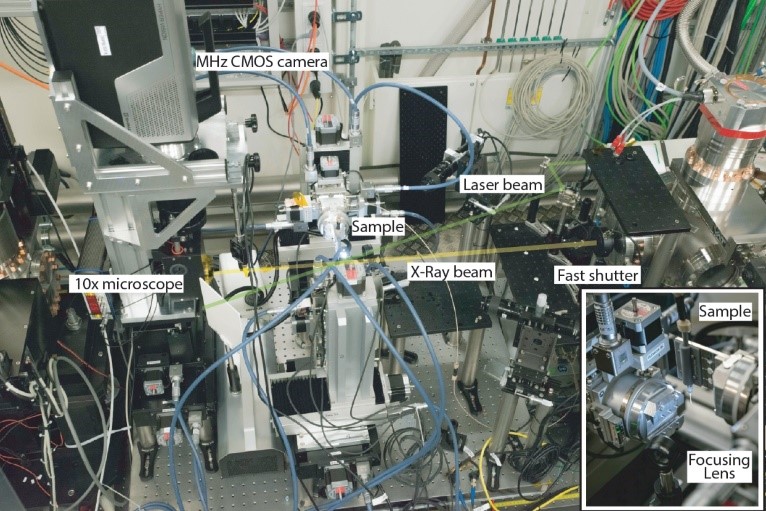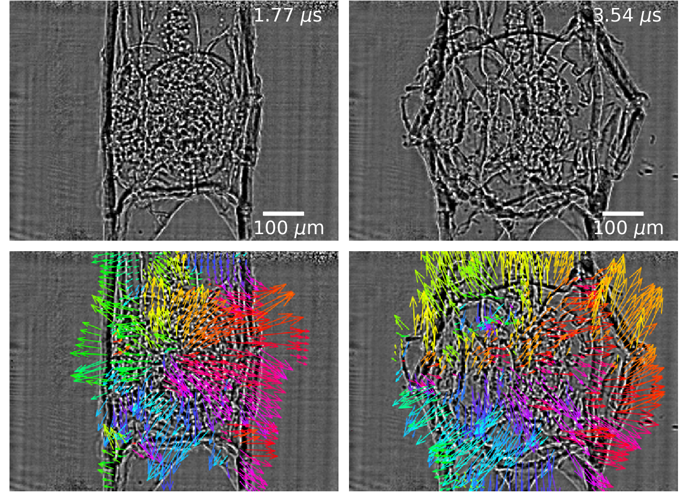First high-speed hard X-ray microscopic movies at a free-electron laser
Combination of ultra-fast data-collection and computational analysis for visualization of rapid processes in materials
At the European X-ray Free-Electron Laser (EuXFEL) in Schenefeld, Germany a research team have demonstrated for the first time the use of Megahertz (MHz) high-speed X-ray laser microscopy to image the rapid microscopic processes induced by laser heating of water-filled capillaries. Their experiments show how processes taking place at speeds up to a few kilometers per second can be studied, paving the way for 3D microscopic movies of similarly fast phenomena, with important potential industrial applications.
The international team of researchers performed the experiment at the SPB/SFX station at the European XFEL. A tiny (0.3mm) diameter water-filled glass tube was heated by an optical laser, causing it to explode. The process was simultaneously illuminated by a train of ultra-short X-ray pulses and captured by a scientific camera at one million frames per second.

Scientists from IPS have contributed to the analysis of the resulting X-ray “movies”. Employing computational tools for optical flow analysis developed at KIT they were able to quantify the direction and speed of the glass fragmentation during the extremely rapid bursting process.
“Such methods allows us to quantitatively measure the dynamics of complex processes. We have already used these techniques to track the motion of cells inside living embryos or measure the velocity of sprays during fuel-injection processes”, says Alexey Ershov, co-author of the paper and scientist at KIT. “This time we could capture the complex kinematics of the shattering glass capillary and observe how the debris of microstructures evolves over time. We are very interested to continue the collaboration with our colleagues from the European XFEL on the analysis of challenging X-ray data and experiments in fast processes.”

The original research has been published in the journal Optica (https://doi.org/10.1364/OPTICA.6.001106)
Further details of the experiment on the EuXFEL-Web-page.
